Zhengkun Li
DT/MARS-CycleGAN: Improved Object Detection for MARS Phenotyping Robot
Oct 20, 2023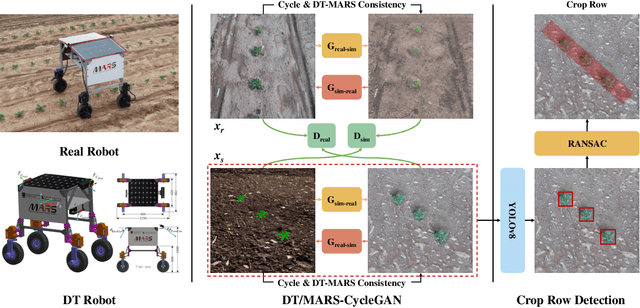
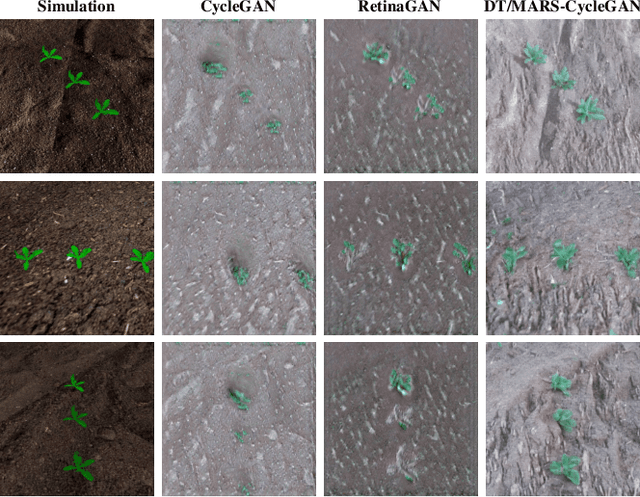
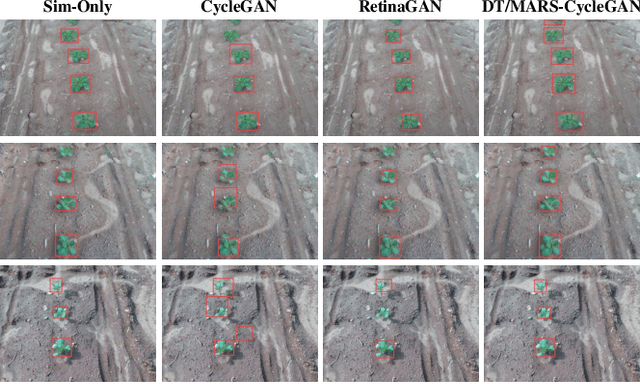
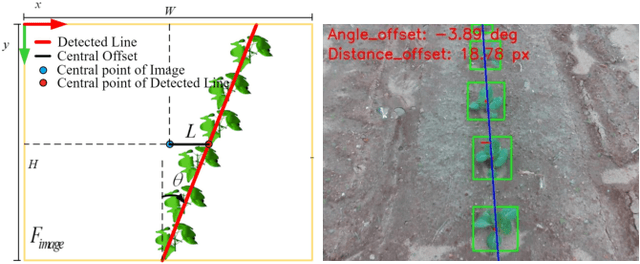
Abstract:Robotic crop phenotyping has emerged as a key technology to assess crops' morphological and physiological traits at scale. These phenotypical measurements are essential for developing new crop varieties with the aim of increasing productivity and dealing with environmental challenges such as climate change. However, developing and deploying crop phenotyping robots face many challenges such as complex and variable crop shapes that complicate robotic object detection, dynamic and unstructured environments that baffle robotic control, and real-time computing and managing big data that challenge robotic hardware/software. This work specifically tackles the first challenge by proposing a novel Digital-Twin(DT)MARS-CycleGAN model for image augmentation to improve our Modular Agricultural Robotic System (MARS)'s crop object detection from complex and variable backgrounds. Our core idea is that in addition to the cycle consistency losses in the CycleGAN model, we designed and enforced a new DT-MARS loss in the deep learning model to penalize the inconsistency between real crop images captured by MARS and synthesized images sensed by DT MARS. Therefore, the generated synthesized crop images closely mimic real images in terms of realism, and they are employed to fine-tune object detectors such as YOLOv8. Extensive experiments demonstrated that our new DT/MARS-CycleGAN framework significantly boosts our MARS' crop object/row detector's performance, contributing to the field of robotic crop phenotyping.
Diffusion Models for Time Series Applications: A Survey
May 01, 2023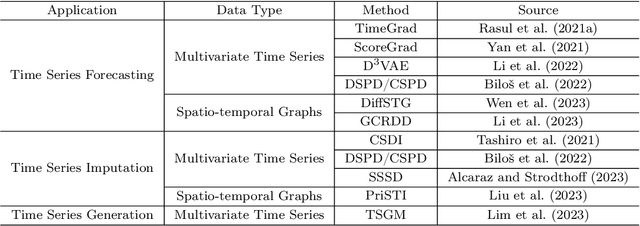
Abstract:Diffusion models, a family of generative models based on deep learning, have become increasingly prominent in cutting-edge machine learning research. With a distinguished performance in generating samples that resemble the observed data, diffusion models are widely used in image, video, and text synthesis nowadays. In recent years, the concept of diffusion has been extended to time series applications, and many powerful models have been developed. Considering the deficiency of a methodical summary and discourse on these models, we provide this survey as an elementary resource for new researchers in this area and also an inspiration to motivate future research. For better understanding, we include an introduction about the basics of diffusion models. Except for this, we primarily focus on diffusion-based methods for time series forecasting, imputation, and generation, and present them respectively in three individual sections. We also compare different methods for the same application and highlight their connections if applicable. Lastly, we conclude the common limitation of diffusion-based methods and highlight potential future research directions.
A Bayesian Long Short-Term Memory Model for Value at Risk and Expected Shortfall Joint Forecasting
Jan 23, 2020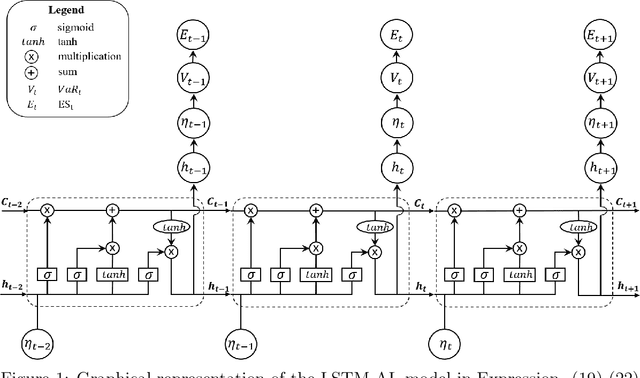

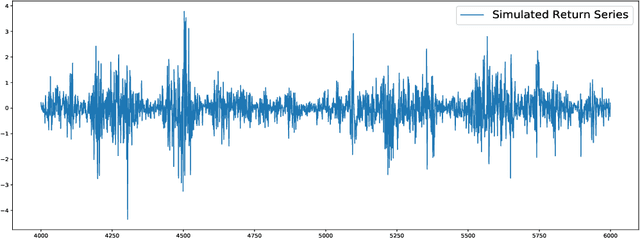
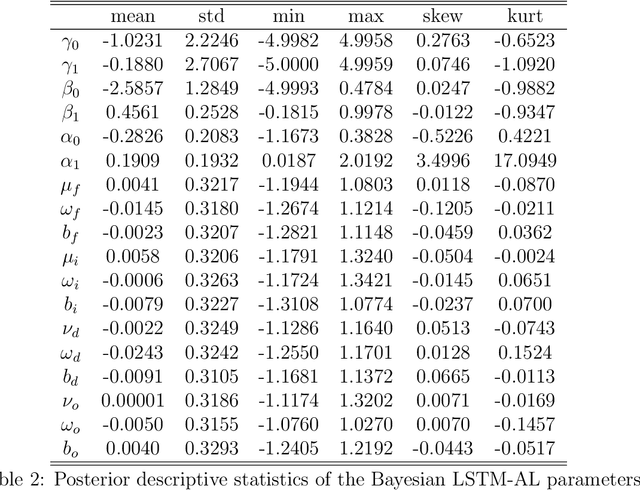
Abstract:Value-at-Risk (VaR) and Expected Shortfall (ES) are widely used in the financial sector to measure the market risk and manage the extreme market movement. The recent link between the quantile score function and the Asymmetric Laplace density has led to a flexible likelihood-based framework for joint modelling of VaR and ES. It is of high interest in financial applications to be able to capture the underlying joint dynamics of these two quantities. We address this problem by developing a hybrid model that is based on the Asymmetric Laplace quasi-likelihood and employs the Long Short-Term Memory (LSTM) time series modelling technique from Machine Learning to capture efficiently the underlying dynamics of VaR and ES. We refer to this model as LSTM-AL. We adopt the adaptive Markov chain Monte Carlo (MCMC) algorithm for Bayesian inference in the LSTM-AL model. Empirical results show that the proposed LSTM-AL model can improve the VaR and ES forecasting accuracy over a range of well-established competing models.
 Add to Chrome
Add to Chrome Add to Firefox
Add to Firefox Add to Edge
Add to Edge